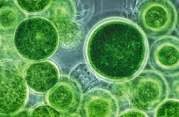jueves, 19 de febrero de 2015
lunes, 9 de febrero de 2015
KINGDOMS QUIZ
http://m.quiz.biz/quizz-606543.html
This is a link for a quiz to help you classify living things. There is a mistake, can you find it?
This is a link for a quiz to help you classify living things. There is a mistake, can you find it?
domingo, 8 de febrero de 2015
EXAM REVISION (possible questions)
Next Friday (February 13th), you'll have an exam to check what you have learnt in Unit 9, here you are some examples of possible questions:
Who was Linnaeus and what did he invent?
Why is it important to classify living things?
What is a virus?What kingdom is it included in?
Make a drawing of the different types of bacteria according to their shapes and name them. Why can bacteria be "good or bad"?
Make a mind map of the different types of protists.
Make a drawing of the different types of protozoa and explain them giving examples.
sábado, 7 de febrero de 2015
Parts of a mushroom and reproductive cycle
jueves, 5 de febrero de 2015
FUNGI
CHARACTERISTICS OF FUNGI:
-EUKARYOTIC
-SINGLE-CELLED OR MULTICELLULAR
-HETEROTROPHS (they can't make their own food because they don't have chlorophyll for photosynthesis)
-THEY HAVE A CELL WALL MADE OF CHITIN
-THEY GROW IN WET PLACES (they need humidity to grow)
TYPES OF FUNGI:
SINGLE-CELLED: YEASTS
Yeast are important because they cause fermentation and are used to make various products such as bread, beer or wine
MULTICELLULAR: MOULDS AND MUSHROOMS
Their cells are grouped into filaments called hyphae. Moulds are very important in ecosistems because they are decomposers.
Mushrooms can be toxic or edible, some of them are a great source of nutrients and have excellent flavours like Boletus edulis or Amanita caesarea. Others are very poisonous and they can kill people like Amanita phalloides.
-EUKARYOTIC
-SINGLE-CELLED OR MULTICELLULAR
-HETEROTROPHS (they can't make their own food because they don't have chlorophyll for photosynthesis)
-THEY HAVE A CELL WALL MADE OF CHITIN
-THEY GROW IN WET PLACES (they need humidity to grow)
TYPES OF FUNGI:
SINGLE-CELLED: YEASTS
Yeast are important because they cause fermentation and are used to make various products such as bread, beer or wine
MULTICELLULAR: MOULDS AND MUSHROOMS
Their cells are grouped into filaments called hyphae. Moulds are very important in ecosistems because they are decomposers.
Mushrooms can be toxic or edible, some of them are a great source of nutrients and have excellent flavours like Boletus edulis or Amanita caesarea. Others are very poisonous and they can kill people like Amanita phalloides.
martes, 3 de febrero de 2015
MICROORGANISMS AND DISEASE
Some microorganisms cause diseases, have a look a the chart about microbes and the diseases they can cause:
domingo, 1 de febrero de 2015
DIFFERENT TYPES OF BACTERIA
These are Cocci, they are spherical in shape. Cocci cause many bacterial infections in humans, such as strep throat, pneumonia, food poisoning, otitis media, various skin diseases, meningitis and severe types of septic shock.

These are bacillus, they are cylindrical in shape. Some are pathogens and cause diseases such as but others are beneficial and used to make yoghourt and other products.
Numerous enzymes, antibiotics and other metabolites have medical, agricultural, pharmaceutical and other industrial applications. Examples of antibiotics formed by Bacillus spp include bacitracin.
They form spores which are a method of surviving unfavourable conditions.

Spirilla are spiral shaped as you can see, they cause diseases like siphilis .

Finally vibrios are comma shaped bacteria, some of them, for example Vibrio vulnificus can cause serious illness when you eat seafood.

Suscribirse a:
Entradas (Atom)






















